UC Gardening Blogs
Sage Advice: Welcome Salvias into Your Garden
By Brent McGhie, UC Master Gardener of Butte County, September 21, 2018 With just under 1000...
Curiosity Didn't Kill the 'Cat
Curiosity didn't kill the 'cat. An aggressive 'cat did. We were delighted to find 10 monarch...
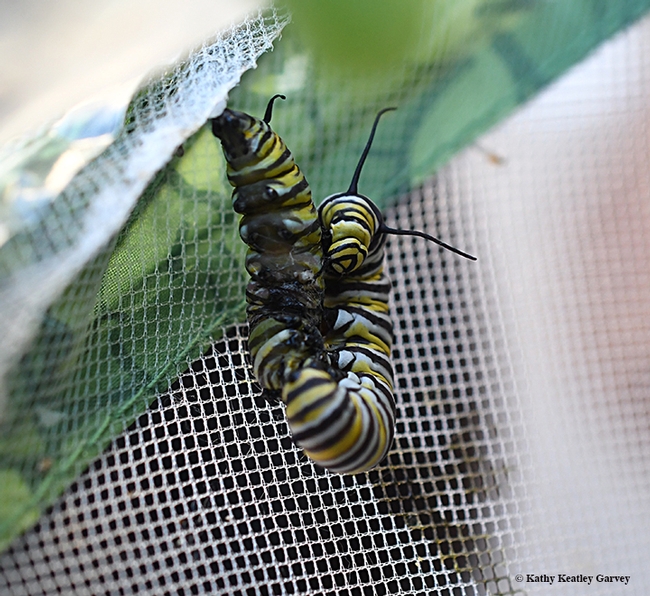
An aggressive caterpillar attacks another 'cat trying to pupate. (Photo by Kathy Keatley Garvey)
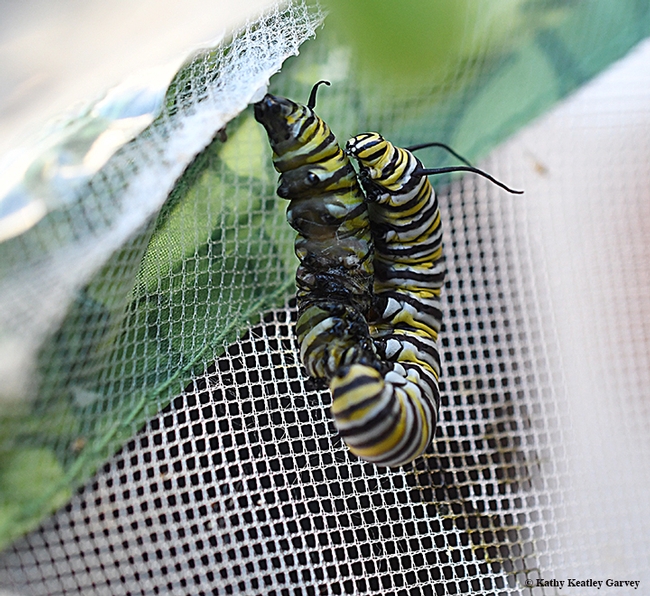
The combative monarch caterpillar latches on tight to the 'cat about to pupate. (Photo by Kathy Keatley Garvey)
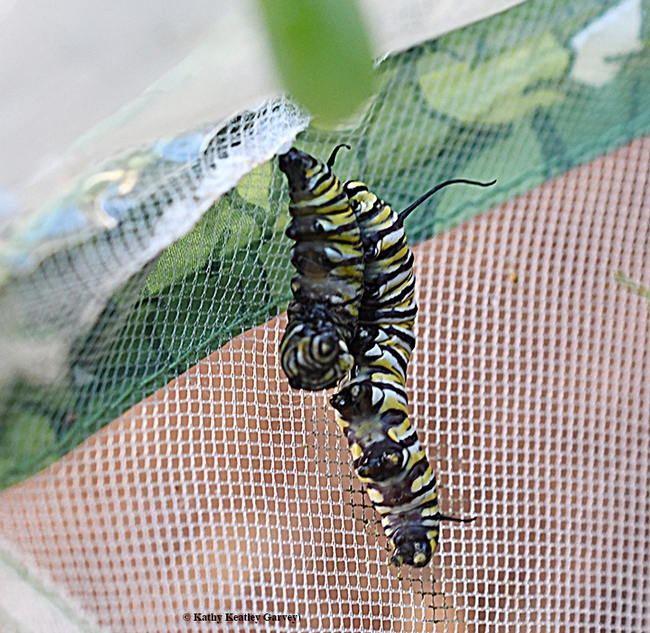
The aggressive caterpillar, after killing its sibling, slides back down to eat more milkweed. (Photo by Kathy Keatley Garvey)
White Pomegranate
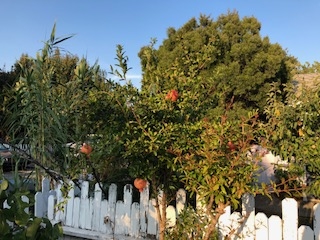
photos by Betty Homer
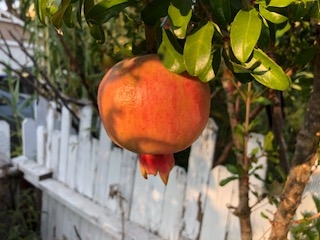
IMG 2423
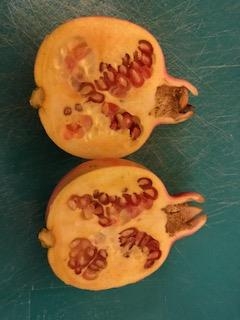
IMG 2424
Photographer Allan Jones Exudes Patience, Skill and Talent
Photographer Allan Jones of Davis exudes patience, skill and talent from the moment he enters the...

Photographer Allan Jones of Davis focuses his camera on insects in the Häagen-Dazs Honey Bee Haven. (Photo by Kathy Keatley Garvey)
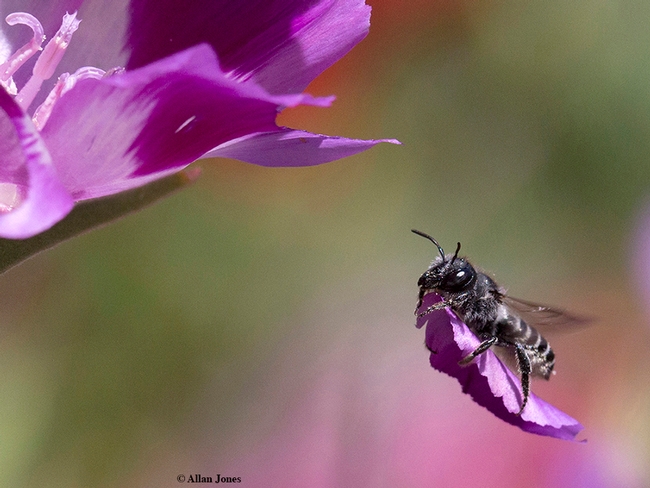
A female leafcutter bee, Megachile fidelis, carries a leaf, a Clarkia petal, back to her nest. (Copyrighted photo by Allan Jones, used with permission)
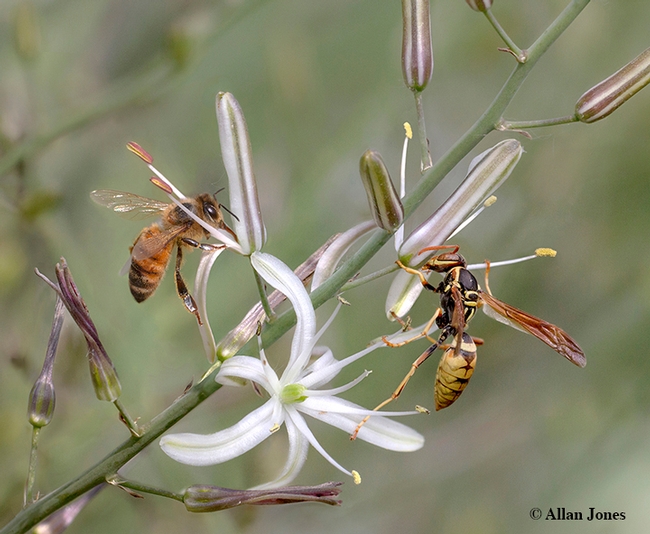
This "honey bee vs. wasp image is designed to help define and differentiate bees and wasps,” says photographer Allan Jones. (Copyrighted image by Allan Jones, used with permission.)
The Heat and Other Sad Gardening Tales
It's 99 degrees outside and I am pooped! The only chores on my list for today were moving and spraying the suckering growth around the base of my “olive tree” – a joke on a neighbor's wrong id of the African Sumac tree in my front yard. Ever since she asked me about the “olive tree” in the yard, that's how I've thought of that tree (Rhus lancea). A wonderful tree for bees in the WINTER when it blooms with the small yellow puffs, otherwise, for me, it's a pain! The survivor of 3 originally planted as a buffer between my house and the neighbors, it has stood up while one of its triplet trees started to lean due to the neighbor's unwieldy hacks and attempts to prune it. I actually began to measure the distance it leaned toward the fence until it was removed. Thanks to having no limbs left on the neighbor's side AND that it was growing on the edge of a drainage berm that he cut out on 1 side to put in a build-a-wall barrier, it was truly doomed! But back to its not so good traits: these trees sucker and I mean sucker! If left alone, there would be a thicket where it is planted; then there are the leaves – millions of them that yellow and fall leaving that side of the driveway in a permanent state of fall is here. The neighbor's wife complained when I politely advised I was NOT going over there to sweep them up because they (the leaves) were covering up the weeds between the houses.
Anyway, I've been cutting and snipping away filling a green waste tote with leaves and cuttings AND since I discovered the temperature was 99, I quit. The heat is too much even though I'm in the shade and Bruce has just announced that a trip to the box store to purchase decking is nigh.
We are in the process of replacing the decking on the higher of our 2 decks. After 25 years, the decking is just too rough and gone to merely take up the boards, flip them over, and put them back (haha, a great idea that never works. So much of the last few weeks were spent in discussing options – synthetic or real wood; taking the deck out entirely and replace with new concrete steps and a stone patio abutting the patio already there or WHAT?!
Naturally, the time used for discussion used up what spring we had and so the demolishing started in 90+ plus degree weather. Little by little the decking disappearing much to the dog's horror and dismay: we now have a 4 board wide (not fastened down) runway to get from the house to the patio and my beloved container plants. Moving plants isn't bad until you start counting them and realize that although 20 trips between the patio and the “back 40” have occurred, and figure there are another 20 trips to go. And don't ask me about having to divide the “sun” plants from the “shade” plants; some never made it out of the garden carts (I can water them just fine in there, thank you)!
A change of conversation here: did anyone else see the “cute” fuzzy caterpillar on the internet a few weeks ago? Called the Pussy Caterpillar because of its size and heavy “fur coat”, it's just the kind of insect that attracts the kiddies. Thank goodness it doesn't live around here because that adorable and cuddly looking thing has stingers in that fur coat which can really give a nasty rash and really hurts. The thing is the caterpillar of the Southern Flannel Moth (Megalopyge opercularis) and is as nasty an insect as they come. So glad it's back East or at least on the other side of the Rockies!
Come and visit with us on Saturdays from 9-2 at the Vallejo Farmers' Market on the corner of Marin and Georgia Streets. We love to talk plants and other related subjects with you! Hope to see you there!



